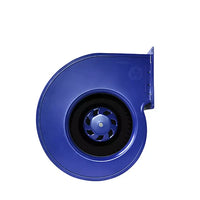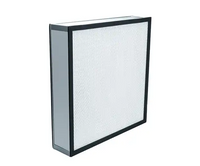When constructing or upgrading a laminar flow hood, ensuring that your fan is properly matched to your HEPA filter is critical for achieving the clean, laminar airflow necessary for mycology and other sterile applications. Here’s a detailed guide to help you select the right fan for your HEPA filter.
Understand Your HEPA Filter’s Specifications
Each HEPA filter comes with specific performance requirements, which are usually provided in its technical datasheet. The key specifications to consider are:
-
Filter Size: This determines the physical dimensions of your airflow area.
-
Filter Resistance (Static Pressure): Measured in inches of water column (in. w.g.), this indicates how much pressure the filter will resist at a given airflow rate.
-
Airflow Requirement: Expressed in cubic feet per minute (CFM), this defines the volume of air the filter needs to pass through to maintain proper laminar flow. Typically, laminar flow hoods aim for airflow of 100 feet per minute (FPM) across the filter surface.
Calculate the Required Airflow
To calculate the required CFM for your fan, use the following formula:
-
Face Area: Multiply the length and width of the filter in feet. For example, a 24” x 12” filter has a face area of 2 square feet (2 ft²).
-
Desired Air Velocity: A typical target is 100 FPM for laminar flow.
For a 24” x 12” filter, the calculation would be:
Select a Fan That Meets Both CFM and Static Pressure Requirements
Fans are rated for airflow (CFM) at various static pressures (in. w.g.). Choose a fan that can deliver the calculated CFM at the filter’s rated static pressure. For example, if your filter has a static pressure of 1.0 in. w.g. at 200 CFM, your fan must be able to provide 200 CFM at 1.0 in. w.g. or higher.
Consider Fan Types
The two most common fan types for laminar flow hoods are:
-
Centrifugal Fans: These are ideal for higher static pressure environments, providing robust and consistent airflow.
-
Axial Fans: While quieter and more compact, these are better suited for lower static pressures.
Account for System Losses
In addition to the filter’s static pressure, other factors can add resistance, such as pre-filters, ducting, or enclosure design. Add these to your filter’s static pressure to calculate the total system pressure.
Testing and Adjustments
After assembling your system:
-
Use an anemometer to measure the airflow at the filter’s face.
-
Adjust the fan speed (if possible) to achieve the desired velocity of 100 FPM.
-
Confirm that airflow remains consistent across the filter surface.
Conclusion
Matching the right fan with your HEPA filter is essential for creating an effective laminar flow hood. By carefully considering your filter’s specifications, calculating the necessary airflow, and selecting a fan capable of meeting those demands, you’ll ensure optimal performance for your mycology needs.

 H13 HEPA Filters
H13 HEPA Filters
 H14 HEPA Filters
H14 HEPA Filters
 Blower Fans
Blower Fans
 Tools
Tools
 DIY Flow Hood Kits
DIY Flow Hood Kits





